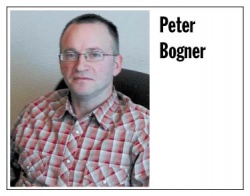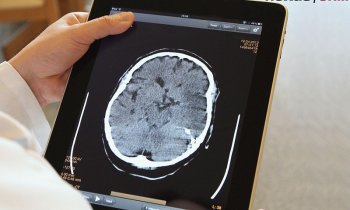Collaboration between imaging facilities
Peter Bogner MD PhD describes current projects aimed at enhancing patient care in South-West Hungary.

Professor Peter Bogner MD PhD med. Habil. Is vice-director of the Institute of Diagnostic Imaging and Radiation Oncology, University of Kaposvár, Hungary and he also works in the Dept. of Radiology, at the Health Science Faculty, University of Pécs. In his early career he was a post-doctoral fellow at Hungary’s National Academy of Sciences, and at the Dept. of Clinical Chemistry, University Medical School of Pécs, as well as in the dept. of Biochemistry and Molecular Biology, Medical School of Ohio, Toledo, USA. Later he was Fogarty fellow at the Laboratory of Biological Chemistry, National Institutes of Health, National Cancer Institute, Bethesda, USA (1989-91). On returning to Hungary he worked in an institute that became the Institute of Diagnostic Imaging and Radiation Oncology. Research continued at the Department of Clinical Chemistry, University Medical School of Pécs. In the years 1997/98 and 2000 he was also a visiting research radiology fellow at the Brigham and Women’s Hospital, Harvard Medical School, Boston, MA. Current research interest: cell volume regulation, diffusion MR imaging
The Professor’s scientific publications and honours are too numerous to list.
Diagnostic imaging information plays an increasingly significant role in healthcare, primarily due to advanced imaging techniques. In addition, recent developments in information technology add major advantages that can improve the use of diagnostic imaging information as well as the medical and financial efficiency of imaging procedures. In fact, recent IT solutions offer a safe and flexible access to digital images in a wide area network that is currently developed and/or used globally.
Along with becoming a member of EU, in Hungary the reorganisation of public administration has begun. This means that the former three counties of South-West Hungary will join to form one region among the five that will represent Hungary in the future. This process seems to evolve somewhat slowly, but EU financing helps to establish different organisations that will function according to this concept in the near future. One such example is the development of a medical IT system in South-West Hungary that will be shared by nine institutes of different size and competence. There is, of course, a hierarchical organisation of healthcare in the region, where the clinical departments of a medical school would represent the highest professional level followed by three county hospitals and several out-patient services. The principle aim of the regional medical network to be developed is the sharing and easy communication of medical information, gained through the diagnostic and therapeutic procedures in which a patient has been involved at certain institutions. No doubt that imaging information is the most demanding, especially in terms of its size and proper visualisation.
There have been two main trends for storing and sharing diagnostic images in a wide area network:
• to maintain large central (in our case possibly regional) archiving facilities that can be accessed by each institute
• local archiving that is maintained by each institute and shared data through some kind of data broker.
Large central image archiving facilities appeared to have several advantages, like bulk storage rates; operation by a dedicated professional staff for data management and for hardware support and high level of physical security. This concept involved easier technological migration, which is a major issue for any local IT staff. Since healthcare financing is nationalised in our country, the national health insurance company would have much easier financial and professional control. Surprisingly, this was not chosen by the participants, but decided so as to develop local archiving and share data on request. Why? The main reasons could be defined as:
• concerns about legal issues
• data ownership
• responsibility for lost data (short term)
• authorisation
• concerns about archive security - as in many countries, in Hungary decades of medical image and data archiving is mandatory by law
• psychological reservations, because system administrators and hospital managers prefer to hug their own data.
So how could the image data sharing problem be solved without large central archives?
Current industry standards, like DICOM and HL-7 are inadequate for this purpose. These standards don’t address issues like proper authorisation, access rights, and on-demand features for wide area network. The solution for the problems has to be some kind of data broker, and that must comply with the standards as well as extend them to meet the needs of this distributed environment. Institution policies for data identification may be different regarding study and patient identification that can be solved with a custom mapping for data identification. Similarly, authorisation should be custom-made for the different institutes and/or users. Possibly a patient index will be collected on the central server of the medical network that will efficiently help the functions mentioned above.
Another issue is professionally demanding visualisation of images that complies with the workflow and organisation of current needs. Sending the full data set is also prohibitive and time consuming, burdening network load. However, today, IT technology and solutions make it possible to transfer studies as big as 100 Mbytes within a few seconds. Visualisation of images might be done on some DICOM workstations, but their local accessibility to multiple users is questionable. Teleradiology would provide another solution, nevertheless features currently available are limited compared to the dedicated DICOM workstations. So, our purpose is to overcome the limitations of either solutions and to demand features (comparison studies, link feature, collaboration, dictation support, a remote transcription service, communication with local RIS, high resolution monitor, multiple monitor capability, MPR, MIP, basic 3D features) that give possibly the best versatility.
The same project is simultaneously running in two other regions in Hungary and it is planned to extend for the entire country within the next few years.
07.08.2006











